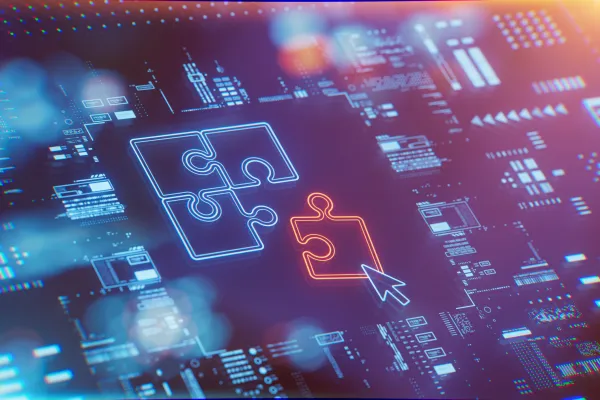In early June institutional real estate investors converged on the Waldorf Astoria in Manhattan for REITWeek, the annual investor forum sponsored by the National Association of Real Estate Investment Trusts (NAREIT). The lineup featured the usual suspects: Apple Hospitality REIT, Essex Property Trust and Mack-Cali Realty Corp., to name a few. But there were a lot of newcomers in the audience as well; a record 3,000-plus investors attended the conference this year, and many of them were generalists hoping to brush up on their real estate investing chops before August 31, when the Standard & Poor’s 500 index will officially designate real estate as its own asset class, separating it from financials and creating the first new Global Industry Classification Standard since 1999.
Most institutional investors have been underweight real estate, and REITs in particular, for years. Some believe the sector is too volatile, but the most common reason, experts say, is a simple lack of knowledge about the industry. REITs and development companies are unique because the real estate market doesn’t always correlate with financials, despite the two being tied together by the S&P for nearly two decades. Now that real estate will be separately classified, with the creation of the S&P Real Estate Select Sector index, this underweight status will be more obvious. Considering the fundamentals, stakeholders will likely notice and not be too happy: Real estate dividend yields average 3 percent, compared with the financials average of 2 percent as of June 14, according to real estate manager AEW Capital Management, and the sector is fourth in yield in the S&P 500, after telecommunications services, utilities and energy. If the new real estate sector were spun off today, it would include 27 stocks with a market capitalization of $524 billion, about equal to utilities, materials and telecom services sectors, according to New York–based asset manager Cohen & Steers.
“Until now, investors have been able to get away with being underweight because REITs have been sort of disguised as financial stocks,” says Brad Case, senior vice president of research and industry information at Washington-based NAREIT. “Starting with the market close on August 31, it will be evident that they’re underweight REITs, so they are starting to learn to make better real estate investment decisions.”
There will be a learning curve, which is one reason so many generalist investors showed up to REITWeek this year. A real estate company’s fundamentals and outlook can’t be calculated in the same way as that of a bank or insurance company. Construction, for example, is an industry-specific issue that investors focused on the traditional business cycle may not understand how to handle. If automaker General Motors Co. wants to adjust its manufacturing schedule, Case explains, it can do so in a matter of weeks or months. If a real estate company wants to put up a new building, it takes four years, on average.
“One thing that has kept generalist mutual fund managers from investing in REITs is that they understand the business cycle, but REITs are a fundamentally different asset class — you have to understand the real estate market cycle,” says Case.
But some generalist investors have been preparing for a stronger focus on real estate for a while. Market volatility has made diversification into real estate a priority for them; investments in real asset strategies have grown 325 percent since the global financial crisis, according to eVestment, a Marietta, Georgia–based investment data firm.
Equity funds have an average real estate weight of 2.3 percent, compared with a benchmark of 4.4 percent, according to Pewaukee, Wisconsin–based real asset manager Capital Innovations. Cohen & Steers, which has $56.3 billion in assets under management, predicts that it would take more than $100 billion to move these funds to a market-neutral position. For perspective, $100 billion is more than 12 percent of the total U.S. REIT market.
“It’s truly going to be a tsunami,” says Michael Underhill, founder and CIO at Capital Innovations.
Whether the $100 billion rushes or trickles into the market over the next several years as investors adjust their portfolios, the shift may lead to increased volatility, at least at first. But over the long term, experts expect that separation from financials will prove how little volatility REITs truly experience.
“A lot of investors had some REIT exposure but didn’t really understand the markets, so they had some tendency to make bad decisions,” says NAREIT’s Case. “That shows up as volatility. To the extent that there is more investment in REITs by people who know real estate, we may actually see a decline in volatility.”
Broader ownership of REIT stocks will also increase liquidity, and over time Cohen & Steers expects reduced correlation between REITs and other financial companies. The tendency for some investors to flee REITs when interest rates rise and to come back when rates fall is also expected to diminish as REITs’ true fundamentals become clearer.
The new designation, along with other recent developments such as the new S&P Real Assets index, which launched on December 31, signifies a shift in how investors and asset managers see real estate, says Larry Antonatos, managing director of global equities at real estate investment firm Brookfield Investment Management in Chicago: “We’re seeing this maturing of the industry from index providers like S&P, but also in terms of how institutional investors and investment consultants think about the space.”
Follow Kaitlin Ugolik on Twitter at @kaitlinugolik.






